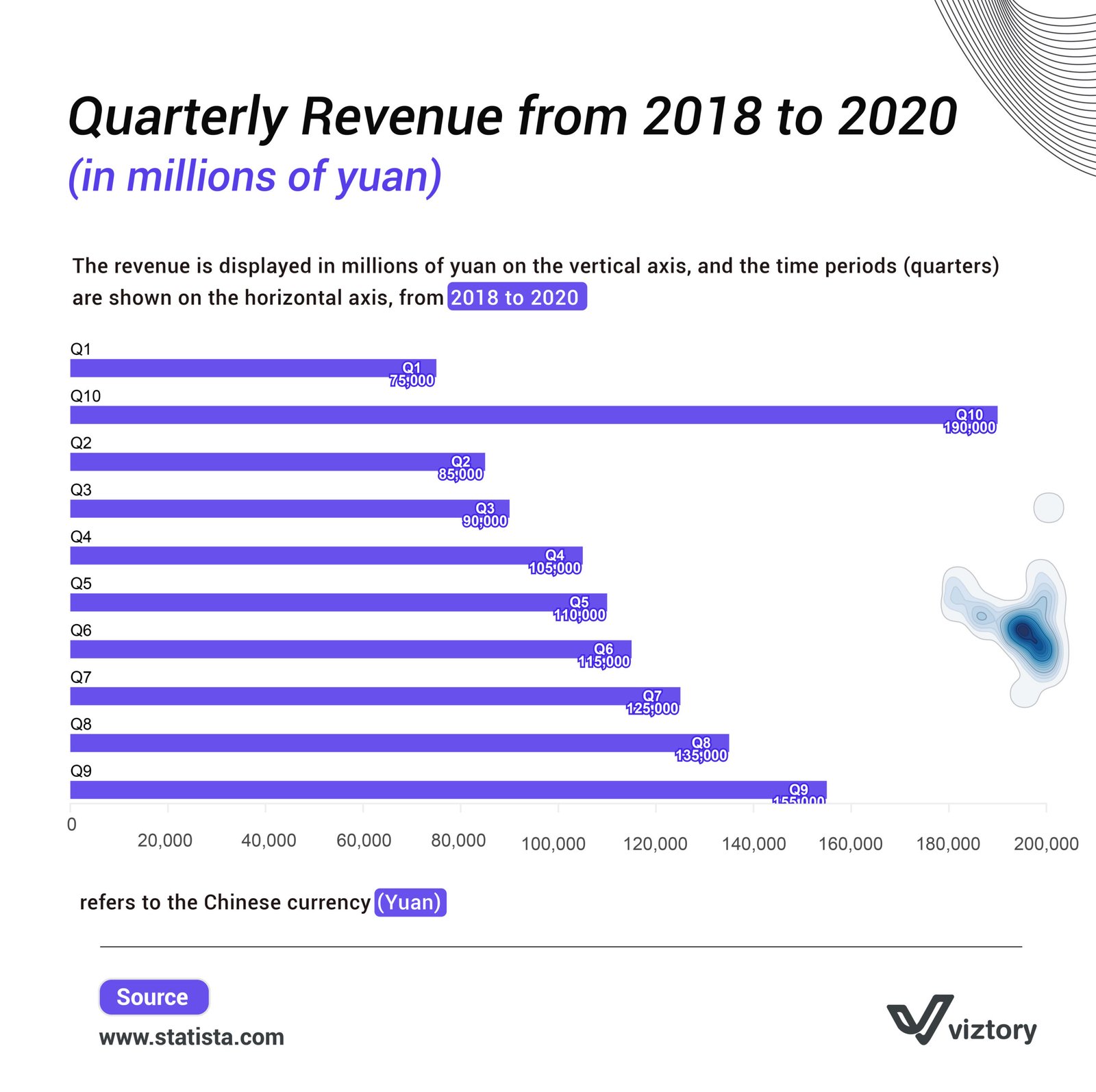The Importance of Analyzing Quarterly Revenue Trends for Effective Marketing Strategies
-
Sep, Thu, 2024
The Importance of Analyzing Quarterly Revenue Trends for Effective Marketing Strategies
In the highly competitive business landscape, understanding financial performance through key metrics such as quarterly revenue is essential. This analysis offers valuable insights into market trends, customer demand, and business growth potential. The image provided highlights quarterly revenue from 2018 to 2020, measured in millions of yuan. By exploring this data, businesses can develop more effective marketing strategies, ensuring that their efforts align with market conditions and consumer behavior.
Importance of Tracking Quarterly Revenue
Revenue growth or decline over time is a clear indicator of a company’s performance. This data can help businesses assess their current strategies and identify areas that require more attention. For example, Q1 in this chart reflects a revenue of 75 million yuan, increasing steadily to 190 million yuan in Q10. This significant growth over time may suggest successful marketing campaigns, product improvements, or increased demand. Marketers should consider such trends when creating campaigns aimed at sustaining or boosting revenue in future periods.
Aligning Marketing with Revenue Trends
By examining the revenue changes quarter by quarter, marketing teams can pinpoint the times when their efforts were most effective. For instance, the increase from Q1 to Q7, where revenue reaches 125 million yuan, could indicate successful seasonal campaigns or the launch of a new product that resonated with the target audience. This insight helps businesses adjust their marketing efforts in real-time, focusing on the tactics that produced the highest returns and correcting those that didn’t meet expectations.
Additionally, identifying weaker periods, such as Q1’s lower revenue, can prompt marketing teams to experiment with new strategies. For instance, businesses may want to focus on customer retention or increase promotional efforts during periods when revenue tends to be lower.
The Role of Data in Forecasting
A thorough analysis of historical revenue can also inform future marketing plans. The steady growth observed from Q1 to Q10 suggests a positive trajectory, offering valuable insight into the market’s potential. By comparing this data with other internal or external factors such as competition, economic conditions, or industry shifts, marketers can predict trends and anticipate customer behavior.
For example, the substantial leap from 135 million yuan in Q8 to 190 million yuan in Q10 may indicate a favorable market shift or the impact of a well-executed marketing initiative. Marketers should use this knowledge to plan ahead, tailoring their strategies to align with expected trends.
Conclusion
Understanding and leveraging quarterly revenue data is a crucial element of a successful marketing strategy. As demonstrated in the chart, tracking revenue trends from 2018 to 2020 provides insights that can enhance decision-making, optimize campaigns, and drive future growth. Marketing teams that integrate financial performance data into their planning will be better equipped to achieve business objectives and maintain a competitive edge in the market.

